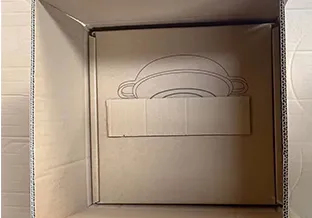
Caring for Your Cast Iron Skillet for Longevity and Performance
Treating Your Cast Iron Skillet A Comprehensive Guide
Cast iron skillets are beloved kitchen workhorses cherished for their ability to retain and evenly distribute heat. They are versatile, suitable for frying, baking, and even roasting. However, to maintain their performance and longevity, proper treatment and care are essential. In this article, we'll explore the best techniques for treating your cast iron skillet, ensuring it serves you well for generations to come.
Seasoning The Foundation of Care
The first step in treating your cast iron skillet is seasoning. Seasoning is the process of applying oil to the skillet and heating it, creating a natural non-stick surface while protecting it from rust. Here's how to season your skillet effectively
1. Clean Thoroughly Start with a clean surface. Scrub your skillet using warm water and a stiff brush or sponge. For stubborn food residues, a little mild dish soap can be used, though it's generally best to avoid soap to preserve the seasoning.
2. Dry Completely Once clean, dry your skillet immediately to prevent rust. You can place it on a low heat on the stove for a few minutes or use a towel.
3. Apply Oil Choose a suitable oil for seasoning, such as flaxseed oil, vegetable oil, or canola oil. Apply a thin, even layer over the entire skillet, including the handle and the bottom.
4. Bake Preheat your oven to 375°F (190°C). Place the skillet upside down on the top rack of the oven, with a baking sheet on the bottom rack to catch any drips. Bake for about an hour, allowing the oil to polymerize. After an hour, turn off the oven and let the skillet cool inside.
Regular Cleaning and Maintenance
After cooking, it’s important to clean your cast iron skillet properly to prolong its life
treating cast iron skillet

- Avoid Soap Generally, avoid using soap unless absolutely necessary. Instead, clean the skillet with hot water and a brush or sponge. You can also use coarse salt as a gentle abrasive if needed.
- Dry and Oil Always dry the skillet thoroughly after washing to prevent rust. While it’s still warm, apply a light coat of oil to maintain the seasoning.
Storing Your Skillet
Proper storage can prevent moisture buildup and rust. Place a paper towel inside the skillet to absorb any moisture. This helps maintain your seasoning and keeps your skillet ready for use.
Dealing with Rust or Sticking Issues
Despite your best efforts, you may occasionally encounter rust or sticking. Don’t worry; these issues can be resolved
- Rust If you discover rust, it’s important to remove it immediately. Use steel wool to scrub away the rust, then re-season the skillet following the seasoning process above.
- Sticking If food starts to stick to your skillet, it may be time to re-season. Follow the same steps to restore the non-stick surface.
Conclusion
Treating your cast iron skillet with care can lead to a lifetime of cooking enjoyment. By seasoning regularly, cleaning properly, and storing correctly, you’ll ensure that your skillet not only remains functional but also improves with age. Embrace the art of maintaining your cast iron skillet, and it will reward you with delicious meals and cherished memories for years to come.
-
Season Cast Iron Perfectly with GPT-4 Turbo TipsNewsAug.01,2025
-
High Quality Cast Iron Cookware - Baixiang County Zhongda MachineryNewsAug.01,2025
-
Premium Cast Iron Pan: Durable & Perfect HeatNewsAug.01,2025
-
High Quality Kitchen Durable Black Round Cast Iron Cookware Pancake Crepe Pan-Baixiang County Zhongda Machinery Manufacturing Co., Ltd.NewsAug.01,2025
-
Cast Iron Cookware - Baixiang County Zhongda Machinery | Nonstick, Heat ResistanceNewsAug.01,2025
-
High Quality Kitchen Durable Black Round Cast Iron Cookware - Baixiang County Zhongda Machinery | Non-Stick, Heat Retention, DurableNewsJul.31,2025


